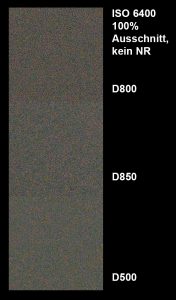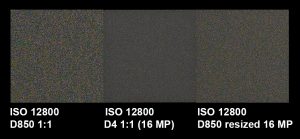Nikon utilizes Silent Wave Motors (SWM) since 1996 after a short attempt with regular electric motors in the AF-I lenses from 1992. The Af-S 200mm 3,8 was the first lens to make use of the SWM motors.
In the first decade of AF-S motors only expensive lenses like long teles and professional zooms were equipped with this very silent and quick focus mechanism. In 2005 the first budget lens was released in the form of the DX 18-55mm 3,5-5,6.
Reason for this will most likely be the exclusive use of SWM ring motors up until then. This type motor requires space inside the lens due to the fact that it encloses the lens elements in a ring form. Also the manufacturing costs are rather high, what also can be seen having a look at the repair part prices.
The 18-55mm DX kit lens uses a SWM micro motor for the first time. This motor looks like a regular electric motor, but works also on the basis of ultrasonic waves. The torque is then transferred to the lens group via a gear mechanism. This gear mechanism can be easily heard when focusing with a micro motor AF-S lens.
Some of the very cheap micro motor lenses can also be identified by having a look at the focus switch on the lens barrel. They only provide an A/M switch instead of an AM/M switch and therefore do not provide permanent manual focus due to the gear mechanism. More expensive lenses with micro motor are equipped with a clutch that simulates the behavior of a ring type AF-S and provides permanent manual focus.
During the years micro motors have been used across the lens portfolio, even in more expensive lenses. Almost all AF-S fix focal lenses below 105mm only have micro motors, regardless of pricing.
For many users only the ring type provides the real AF-S experience. They are usually faster, quieter and provide the better manual focus feeling.
This was the reason for me to compile the below list of AF-S lenses, split by ring SWM or micro SWM. For some lenses I am not completely sure, they are marked with a question mark. If you can provide additional information on those, you are free to mail me at „info@”
The list also contains some surprises. The first DX kit lens, the 18-70mm 3,5-4,5 DX IF-ED also made use of a ring type motor. The two years older AF-S 24-85mm 3,5-4,5 G IF-ED without VR is a close cousin and also uses a ring SWM. The 18-70mm is most likely the lens with the highest production volume of any ring type AF-S Nikkor.
The second surprise is the AF-S 50mm 1,4 G. As only lens below 105mm it also features an ring SWM. Supposedly the development of this lens began before Nikon was able to build micro motor AF-S lenses with clutch.
Recently a new type of focus motor appeared with the AF-P lenses. All AF-P lenses are not listed below, since they can be recognized by the model name.
AF-S ring motor: SWM
50mm 1,4 G
60mm 2,8 G IF-ED Micro
105mm 2,8 G IF-ED VR Micro
200mm 2,0 G IF-ED VR and successor
300mm 4,0 D IF-ED and successor
300mm 2,8 D IF-ED and successor
400mm 2,8 D IF-ED and successor
500mm 4,0 D IF-ED and successor
600mm 4,0 D IF-ED and successor
800mm 5,6 E FL ED VR
8-15mm 3,5-4,5 E
14-24mm 2,8 G IF-ED
16-35mm 4,0 G IF-ED VR
17-35mm 2,8 D IF-ED
24-70mm 2,8 G ED and successor
24-85mm 3,5-4,5 G IF-ED
24-120mm 3,5-5,6 G IF-ED VR
28-70mm 2,8 D IF-ED
70-200mm 4,0 G IF-ED VR
80-200mm 2,8 D IF-ED
70-200mm 2,8 G IF-ED VR and successor
70-300mm 4,5-5,6 G IF-ED VR
80-400mm 4,5-5,6 G IF-ED VR and successor
200-400mm 4,0 G IF-ED VR and successor
(?) 10-24mm 3,5-4,5 G IF-ED DX
12-24mm 4,0 G IF-ED DX
17-55mm 2,8 G IF-ED DX
18-70mm 3,5-4,5 G IF-ED DX
AF-S micro motor: Micro SWM
20mm 1,8 G ED
24mm 1,4 G ED
24mm 1,8 G ED
28mm 1,8 G
28mm 1,4 E (?)
35mm 1,4 G
35mm 1,8 G ED
35mm 1,8 G DX
40mm 2,8 G Micro DX
50mm 1,8 G
(?) 58mm 1,4 G IF-ED
85mm 1,4 G
85mm 1,8 G
85mm 3,5 G Micro DX
105mm 1,4 E ED
24-85mm 3,5-4,5 G IF-ED VR
24-120mm 4,0 G IF-ED VR
28-300mm 3,5-5,6 G IF-ED VR
16-85mm 3,5-5,6 G IF-ED VR DX
16-80mm 2,8-4,0 E IF-ED VR DX
18-55mm 3,5-5,6 G ED DX and successor
18-105mm 3,5-4,5 G IF-ED VR DX
18-135mm 3,5-5,6 G IF-ED DX
18-140mm 3,5-5,6 G IF-ED VR DX
18-200mm 3,5-5,6 G IF-ED VR DX and successor (?: 1st version also micro SWM?)
18-300mm 3,5-5,6 G IF-ED VR DX
55-200mm 4,0-5,6 G ED DX and successor
55-300mm 4,5-5,6 G IF-ED DX
 The hype regarding the noise performance above ISO 3.200 should be gone rather quickly. Looking at the RWA files without any NR, it becomes quite clear that the D850 does not perform any better than a D800/D810. This is in itself is a progress, since we are having now almost 10 MP more on the same sensor area. However, this is an evolution and not a revolution. We should expect a certain kind of maturity in sensor technology, big jumps in performance are now a thing of the past.
The hype regarding the noise performance above ISO 3.200 should be gone rather quickly. Looking at the RWA files without any NR, it becomes quite clear that the D850 does not perform any better than a D800/D810. This is in itself is a progress, since we are having now almost 10 MP more on the same sensor area. However, this is an evolution and not a revolution. We should expect a certain kind of maturity in sensor technology, big jumps in performance are now a thing of the past.
